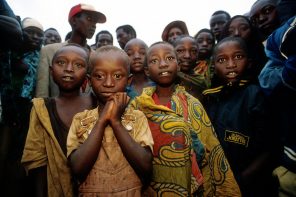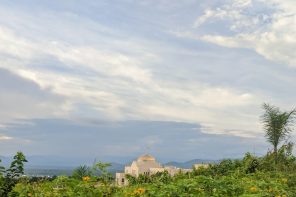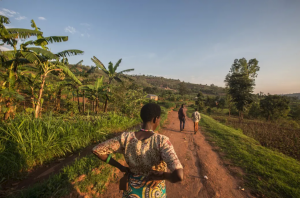In an effort to be productive in my criticism, here are nearly two dozen or so Western journalists I think do good work in Africa.
This all started with Phil Bronstein’s Easterly-inflected praise of the courage of Nick Kristof to admit “that there is a white man’s burden in reporting on Africa.” That’s the wrong frame, even by Kristof’s admissions. He doesn’t look for white characters because he is white. He looks for white characters because he thinks the readers of the New York Times like white characters.
Which is to say, Western news outlets presume audiences identify with white characters. This is a problem what we in the US call the “ethnic press” has long been baffled by, and as readership surveys reveal huge changes in demographics, it’s going to connue to baffle old white editors.
So here are some journalist writing for those confused Western outlets – who may or may not be white themselves – doing tremendously good work for foreign audiences about Africa.
It bears noting the obvious: All journalists make mistakes, of fact and frame. Not every story we do is even good, let alone perfect, and sometimes we don’t have the time, the energy, the financial resources and the intellectual strength to fight against the trope. Most of us don’t have the money to go dig as deeply into stories as we’d like (which is partly why some of us make lives in these foreign places we cover). And all of us do what we do because there are good, intelligent, dogged editors on the other end of our emails, advocating not only for our stories but for our view of a continent so often represented by the tropes we all know and criticize.
I apologize to broadcast journalists; your absence from this list reflects my poor bandwidth. It’s really hard to watch video out here, and it’s hard for me to keep up with all the audio. But please, assert yourselves in the comments.
Thanks to all these journalists, the ones I name and the ones I miss, and to their editors, who continue to do thoughtful work that defies the stereotype.
And thanks to readers who add other worthwhile journalists and links in the comments.
For my money, these people are worth your time, wherever in the world they are now:
(More links coming, I had to knock this off and go commit my own journalistic sins.)
Jeb Sharp, PRI’s The World. Jeb labored tirelessly to bring the voices of Congolese women to mainstream America, well before Congo was a sexy story that everyone else wanted to do.
Andrew Rice, freelancer. Formerly based in Uganda, Andrew managed to get five thousand words in the New York Times magazine about cattle sperm. That’s right: Cattle sperm. Later, he got a cover out of agro-industralization. He stops just short of making African agriculture sexy, but when short is the feature well of the NYT Magazine, we’ll take it. Also, his book is one of the best bits of narrative journalism to come out of Africa in the last ten years, in my estimation. And, gasp, the main character is a Ugandan.
Lydia Polgreen, the New York Times. Her work from Congo, also before it was sexy, won everything there is to win in journalism, and rightly so. She less reported than pummeled her way to hard, damning information about a conflict then truly overlooked. She was simply too good to ignore.
Kate Thomas, freelancer. Kate’s not afraid of the serious, the technical, the outright wonky, and her work for IRIN, among others, gives an up-close picture of a part of the world others still write with stories that start, “So-and-so many years after a brutal civil war…”
Katrina Mason, now of Reuters (Kinshasa) but erstwhile freelancer in Sierra Leone. Katrina’s Sierra Leone work was full of people and place – local people, local places – and always a delightful read.
Steve Bloomfield, freelancer. His prose is clean and crisp and focused on bringing places alive on the page. And that soccer book was a pretty impressive bit of reporting, to boot.
Sarah Childress, WSJ/Nairobi. Her news coverage is comprehensive, critical and full of detail. You won’t find a lot of anonymous aggregate, a la “Most Kenyans think….”
Stephanie McCrummen, Washington Post, formerly East Africa. She consistently did stories no one else would do, and thought of angles people who hadn’t spent a deacde in the job couldn’t have. She also managed to get all that through editors and, often, on the front page.
Stephanie Nolen, the Globe and Mail, formerly Africa bureau chief. People were cacophonous in her stories. If there weren’t ordinary people to talk to, there was rarely a story.
Will Connors, freelancer. Okay, so he cheated a bit making himself his own white character in a four-parter about being a white extra on a Nigerian soap opera. But that’s a situation where being white is relevant, not cheap. And his features aren’t bad.
Michela Wrong, freelancer. The most interesting part of her Congo book is the part that’s not about white people, or even politics, but about the vibrant counter-cultures of Mobutu’s Congo. Her later books were devoted to bringing important political dramas – Eritrea’s war for independence, Kenya’s whistleblower – to mainstream readers.
Myles Estey, freelancer, formerly of Liberia. Myles’ series “Gettin’ By,” about how Liberians make a living, is fabulous up-close reportage.
Shashank Bengali, McClatchy, formerly Africa bureau chief. Shashank consistently blended hard news reporting with deft feature detail, bringing all parts of a story to bear on the local. And his blog was great.
Marc Lacey, New York Times, formerly East Africa bureau chief. Marc is hands-down the best journalist at managing voice and reportorial authority in controversial situations, as in, “Is this Darfur stuff really genocide?” How did he do it? By using local voices and letting his readers make up their minds on the implied questions.
Photographers
Not a world I know well, but here are three:
Glenna Gordon, Liberia. Her Scarlett Lion blog has long been a must-read for any of us on the continent, and her photos consistently speak of her close attention to and respect for the people whose worlds she inhabits, for years or for days.
Tim Heatherington. He spent ten years chronicling Liberia in the awe-inspiring book, Long Story, Bit by Bit. White people are so irrelevant to the stories he found, it’s almost absurd even to write this sentence.
Peter DiCampo. Check out Life Without Lights and tell me he doesn’t belong on the list.
Honorable Mentions
Donald MacNeil of the New York Times did parachute journalism proud with his work earlier this summer on PEPFAR funding cuts in Uganda and universal health care in Rwanda. He was the Times’ southern Africa guy for awhile, so he knows the drill a bit better than most parachute journalists, but his deep reportage and his determination to use local experts should be a lesson for all of us, wherever we base ourselves.
Graeme Wood, freelancer. Also a parachutist, but I think he tends to get the tone right. This story about witches in the Central African Republic, for example, could have gone incredibly sour in the hands of a more cynical or more self-indulgent writer.
Bec Hamilton, writer/advocate/scholar. She’s not a journalist by profession, but Bec’s work as a writer-advocate from Sudan is focused on bringing local voices to center stage. She’s does advocacy through writing the right way.
For Further Reading
Michela Wrong’s pitch-perfect indictment of the brazenness of writers wandering Africa in search of their literary masterpieces… and the tendency, in her experience, to find that they’re all…male.




Even the Economist! http://www.economist.com/node/16646422?story_id=16646422&fsrc=rss